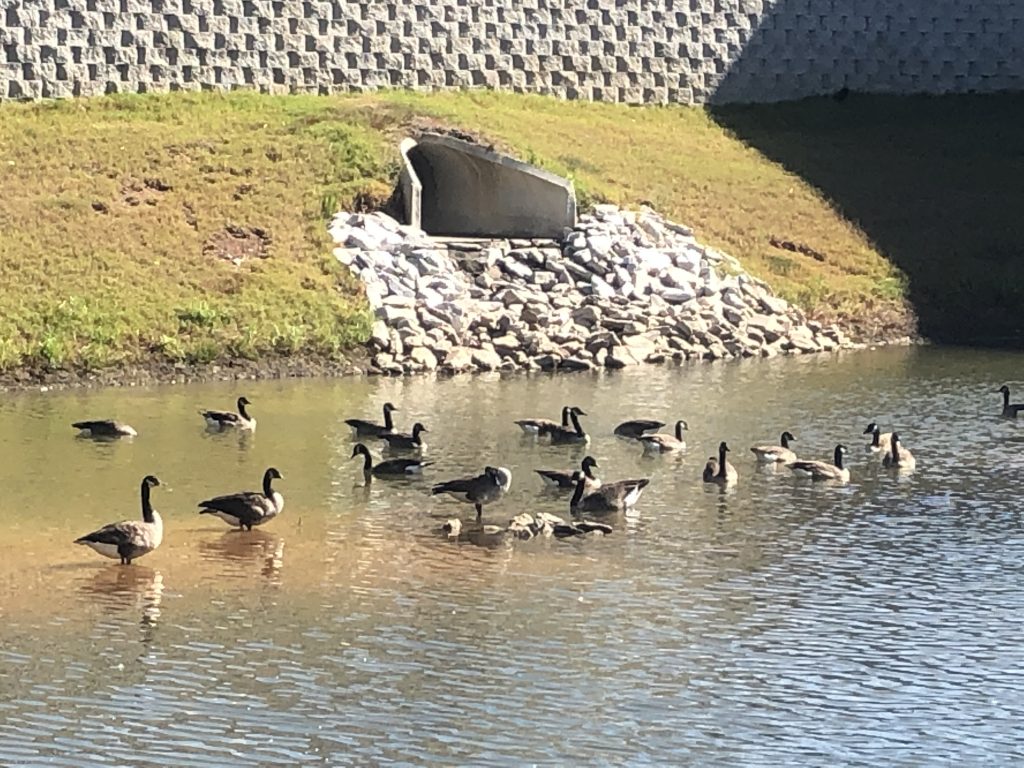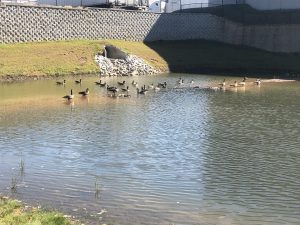 Ever had an issue with Canada Geese on your property? Canada Geese are migratory birds and are protected by the Migratory Bird Treaty Act. They are protected by federal law and are managed by the Fish and Wildlife Service. The subspecies we are most familiar with here in North Carolina that some consider a pest have a weak migratory instinct. Canada Geese that do not migrate are called residents. The resident population is regulated differently than the migratory population.
Ever had an issue with Canada Geese on your property? Canada Geese are migratory birds and are protected by the Migratory Bird Treaty Act. They are protected by federal law and are managed by the Fish and Wildlife Service. The subspecies we are most familiar with here in North Carolina that some consider a pest have a weak migratory instinct. Canada Geese that do not migrate are called residents. The resident population is regulated differently than the migratory population.
Most of the time when a client has an issue with geese, it is from a nuisance-related standpoint. Geese tend to leave droppings which can be unsightly and raise an issue for health concerns. They also become aggressive during the spring when they are sitting on their nests. In areas with vehicle traffic, they can block roads and cause traffic jams. In regard to the pond world and stormwater industry, they cause issues with bank erosion and can destroy newly planted aquatic plants.
So, what attracts geese to an area? Geese are attracted to areas that are favorable to them. They enjoy open water with short vegetation and open sight lines. Geese will walk into an area of water just as well as fly in. They like tender growing vegetation, especially grass, and can be attracted to food handouts from people feeding. Well-manicured pond banks with easy access to the water and vegetation to snack on are a perfect habitat for the resident goose.
 What can be done to discourage geese from using an area?
What can be done to discourage geese from using an area?
The protection by federal law only limits options that harm the geese. Hazing geese is legal, humane, and doesn’t require a permit. If you can make the birds feel unsafe in an area this may encourage them to leave. If they feel they are in harm’s way, they will likely leave an area. Some companies accomplish this with the use of dogs.
Predator decoys are another option to discourage geese from using an area. Decoys that have movement or sound associated tend to work the best. Over time, however, the geese may become used to the decoy and it will become less effective.
Eliminating the ease of access to an area also discourages geese from using areas such as ponds. Allowing a border to grow around a pond is what we typically recommend. The border only needs to be about 2-3’ tall. Temporary fencing is also used in some applications to prevent geese from accessing a pond, especially if it has been recently planted with beneficial aquatic plants.
There are also chemical repellents that can be used to treat the areas the geese use as a food source such as lawns or pond banks. The repellants may taste bad or cause an upset stomach to discourage the geese from using the area. In most cases, the geese will leave. These repellants have to be applied regularly to be effective.
Final ways to discourage geese include nest removal, egg addling, and geese rounds ups. When geese are nesting, nests without eggs can be removed without a permit. If eggs are present, the eggs can be handled with a permit. Permits are obtained at this link. Between June and early July, geese lose their flight feathers. Targeted round-ups are an option during this time. Since the birds cannot fly away, they are herded into an area where they can be captured.
For more information or if you have a problem with resident geese on your property, contact us today for a consultation about options that may help you!
*Source information (https://www.ncwildlife.org/Portals/0/WildlifeProblems/documents/Managing-Canada-Goose-Issues.pdf)

